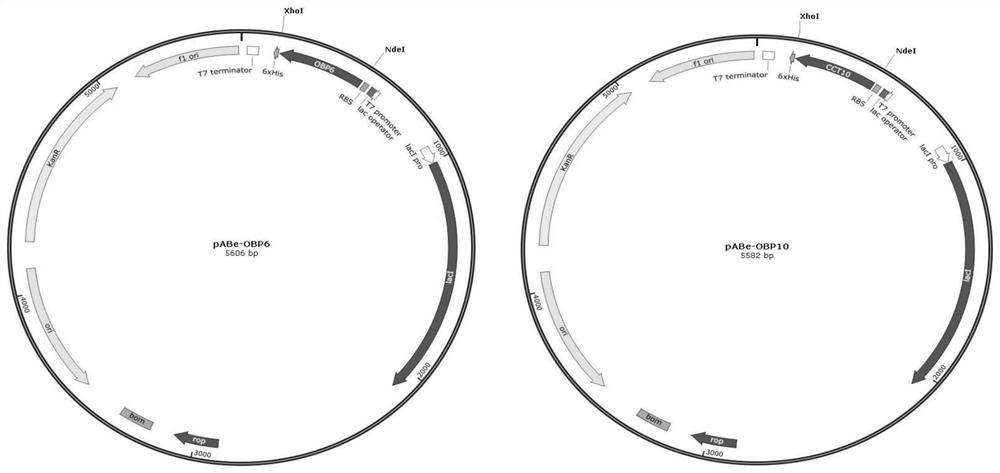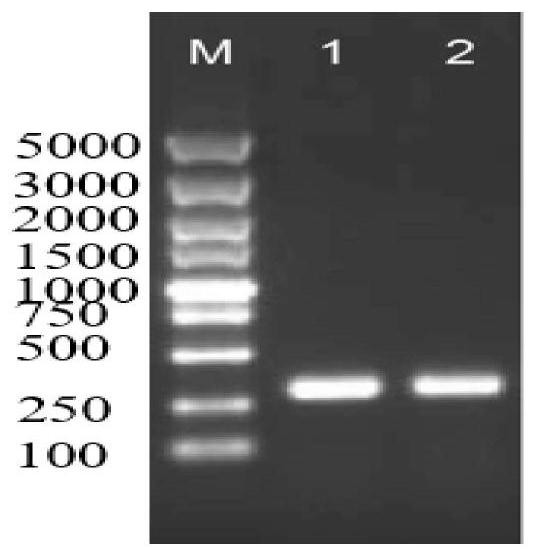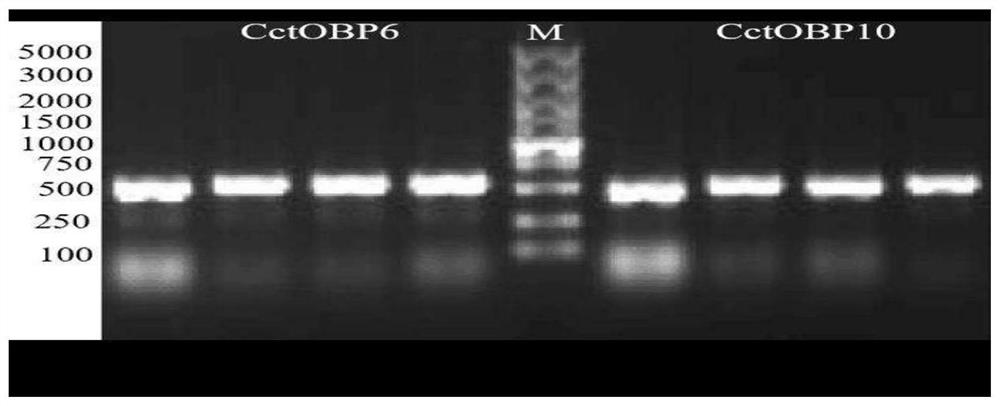Tibetan anagrus cantoniensis odorant binding protein gene sequence and application thereof
An odor-binding protein and gene sequence technology, which is applied in the field of odor-binding protein gene sequences of H. tuftsiensis in Tibet, can solve problems such as affecting the biological control effect and increasing the control cost of walnut households, and achieves the enrichment of chemical ecology theory, enrichment The effects of new methods and approaches to control
- Summary
- Abstract
- Description
- Claims
- Application Information
AI Technical Summary
Problems solved by technology
Method used
Image
Examples
Embodiment
[0027] 1. Construction of the cDAN library of the Tibetan tassel-horned elephant beetle
[0028] 1.1 Use the Trizol method to extract the total RNA of the antennae, head, male, abdomen, foot, and wing of the male and female adults of the Tibetan tamarind beetle respectively. After the extracted total RNA samples pass the test, use magnetic beads carrying Oligo (dT) Enrich eukaryotic mRNA; then add fragmentation buffer to break mRNA into short fragments, use mRNA as a template, and use six-base random primers to synthesize one-strand cDNA, and then use DNA polymerase to synthesize second-strand cDNA; use AMPure After purification of the double-stranded cDNA by XP beads, end repair is performed, A-tails are added to connect the sequencing adapters, and the fragment size is selected with AMPure XP beads; PCR amplification is performed, and the PCR-amplified products are purified with AMPure XP beads to obtain the final library. After the library is constructed, use Qubit2.0 for p...
PUM
| Property | Measurement | Unit |
|---|---|---|
| molecular weight | aaaaa | aaaaa |
Abstract
Description
Claims
Application Information
 Login to View More
Login to View More - R&D
- Intellectual Property
- Life Sciences
- Materials
- Tech Scout
- Unparalleled Data Quality
- Higher Quality Content
- 60% Fewer Hallucinations
Browse by: Latest US Patents, China's latest patents, Technical Efficacy Thesaurus, Application Domain, Technology Topic, Popular Technical Reports.
© 2025 PatSnap. All rights reserved.Legal|Privacy policy|Modern Slavery Act Transparency Statement|Sitemap|About US| Contact US: help@patsnap.com



